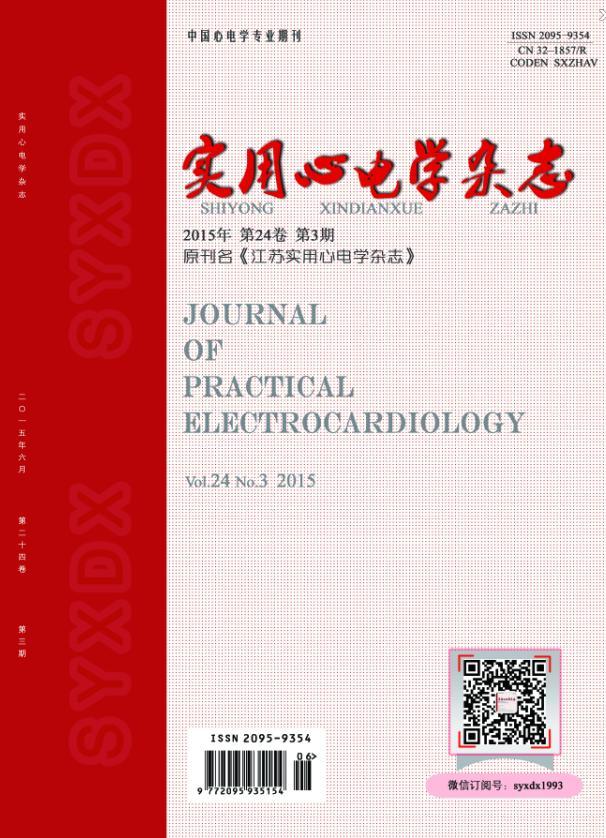● Article
TU Ji
Objective To analyze the 12 lead ambulatory electrocardiography(AECG) of patients with atrial fibrillation(AF), and to explore the relationship between the concomitant abnormal manifestations and ages, disease diagnosis and organic heart disease, respectively, in order to know about paroxysmal atrial fibrillation(PAF) further. Methods The AECG data of 120 patients were collected who were diagnosed with AF or PAF by Holter examination. Those data were retrospectively analysed and summarized against the background of baseline, according to the concomitant abnormal manifestations during AF recorded by AECG. Results (i) There were 68 out of 120 AF cases complicating various types of ECG abnormalities by Holter examination, with an incidence rate of 56.7%(68/120). The most common ECG abnormalities were rapid ventricular rate and ventricular premature beats, accounting for 30.8%(37/120) and 29.2%(35/120), respectively. ST-T changes, conduction block and long R-R intervals (>2.0 s) successively took the next places, accounting for 26.7%(32/120), 24.2%(29/120), and 19.2%(23/120) , respectively. Among the AF patients over 65, there were sometimes two or more types of concomitant ECG abnormalities in the same case. (ii) There were 18 out of 120 AF cases diagnosed with PAF, accounting for 15%(18/120), mostly triggered by atrial premature beats. In pulmonary heart disease group, coronary disease group, surgery examination group and rheumatic heart disease group, ventricular premature beat was common, accounting for 45%(5/11), 50.0%(11/22),42.9%(2/7) and 30.0%(3/10), respectively. In hypertension group, ST-T changes were more common, accounting for 44.1%(15/34). Rapid ventricular rate was mostly seen in chest suppressionpalpitation group, hyperthyreosis group and diabetes group, accounting for 38.0%(8/21), 33.3%(1/3), and 22.2%(2/9), respectively. In syncope group, there was one case complicating rapid ventricular rates, and one with long RR intervals (>2.0 s). The incidence of concomitant AECG abnormality can be as high as 67.4% among patients with organic heart disease. Conclusion Holter can accurately reveal the concomitant AECG abnormalities among AF patients, which may be two or even more types in the AF patients complicating organic heart disease and(or) the ones over 65, and determine the initiating factors and site of PAF.
